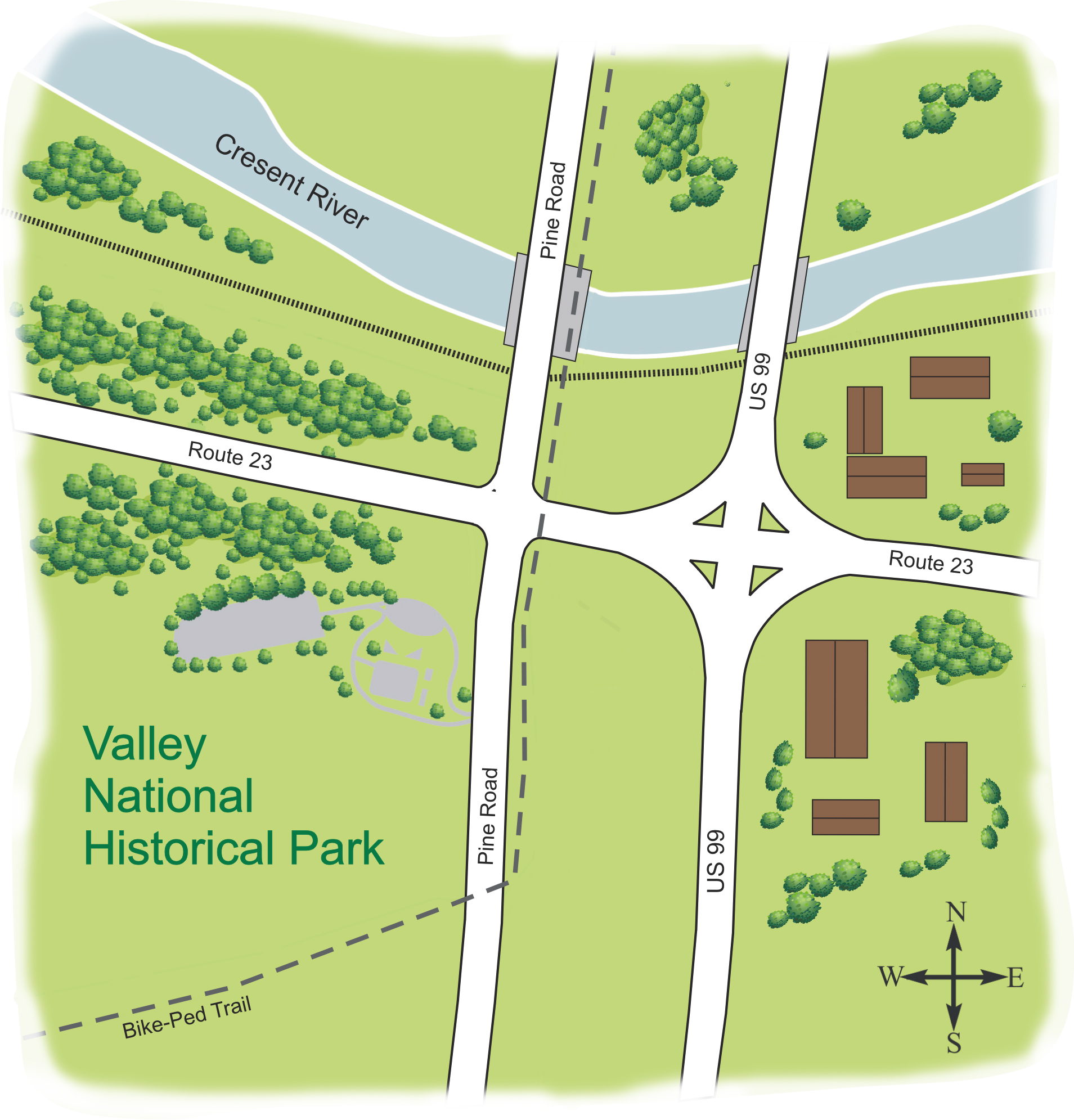Project Examples
Net Benefit Example
Overview
Valley National Historical Park is situated in a heavily developed suburban area along Crescent River and is adjacent to Expressway US-99. Two significant local roadways, Route 23 and Pine Road, and a freight rail corridor pass through the park.
Because of its suburban location, the park, which is primarily historic in nature, has a heavy recreational component of bicycle-pedestrian trails. The existing bike-ped trail crosses Crescent River and the railroad via the local Pine Road Bridge. This local bridge has exceeded its useful life and, after recent storm damage, was removed from service due to safety reasons. A temporary trail route crossing the Crescent River was constructed just outside the park boundaries. Vehicular traffic crosses the river via the Route 99 Bridge.
Valley National Historic Park qualifies as a Section 4(f) property in two ways: 1) it is a publicly-owned, public park and 2) it is a historic site, eligible for the National Register of Historic Places. The officials with jurisdiction for the property include the individuals who manage the park and the State Historic Preservation Officer.
Challenge
The State DOT, local municipality, and the park managers all have pressing needs for their transportation systems and the park operations.
The State DOT needs:
- The US 99 bridge is nearing the end of its structural life and had capacity limitations;
- Update the traffic interchanges on either side of the US-99 Bridge (The existing interchanges were geometrically deficient and warrant improvement. Desired improvements to both interchanges require right of way acquisition within the park boundaries).
The local municipality needs:
- Desire to replace the lost utility of the Pine Road Bridge crossing over the river and railroad;
- Maintain existing traffic flow on Route 23 through the park.
Park managers need:
- Maintain bike-ped trail continuity across the river and railroad within the park, and increase capacity of the trail connections;
- Improve park safety and visitor experience by providing separation of visitor center access from through local traffic movement on Route 23.
Solution
Following several years of discussion between the State DOT, municipality, and park managers, the three parties developed a mutually beneficial plan:
- The DOT will replace and widen the US-99 Bridge and reconstruct the adjacent interchanges, enhancing capacity and improving traffic flow. Added capacity on the bridge will avoid the need for the local government to replace the Pine Road Bridge.
- A new bike-ped bridge will be constructed over the river and railroad on the alignment of the former Pine Road Bridge, enhancing capacity of trail connections within the park.
- Reconfiguration of the western US-99 interchange will accommodate relocation of Route 23 in a way that provides more efficient separation of local Route 23 traffic from visitors accessing the park’s Visitor Center and internal park roads.

The road reconfigurations for the interchanges and the park entrance involved Section 4(f) uses of the Valley National Historical Park property. The State Historic Preservation Officer felt the project would have an adverse effect on the site, but the property’s eligibility would not be affected. The park managers also agreed, in writing, that by separating local thru traffic from park visitor traffic the proposed projects would have net benefit to the park in terms of increased safety and enhanced park visitors’ experience. The State DOT also held public meetings to share information about the project with the public.
Can the project sponsor use a Section 4(f) programmatic evaluation for this project?
Yes. This project meets the criteria for a Net Benefit Programmatic Evaluation.
